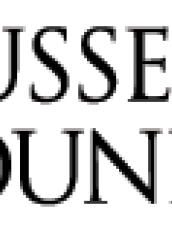Russel Sage Foundation Request for Articles: Severe Deprivation in America
Proposal for RSF: The Russell Sage Foundation Journal of the Social Sciences Issue and Conference on Severe Deprivation in America
Since 2000, the U.S. poverty rate has increased and the poor have become poorer. Along with hardships brought on by the Great Recession, welfare reform, the prison boom, the rise of short-term and low-wage jobs, political decisions at the federal level, declines in union membership, and high rates of joblessness have all contributed to deepening poverty in America.
At the same time poor families saw their incomes drop or stagnate, their cost of housing rose substantially. Median asking monthly rent for vacant units has increased by more than 70 percent since 1990. At the same time, fewer new households were receiving government assistance. Cash assistance caseloads have fallen from 12.3 million recipients per month in 1996 to 4.5 million in 2011. Today, only one in ten adults living below the poverty line receives cash welfare.
On the other hand, some federal programs have grown substantially
over the last two decades: namely, the Earned Income Tax Credit
and the Supplemental Nutrition Assistance Program. Large-scale
changes in federal poverty policy have created new winners and
losers. Some low-income families now fare much better; others
fare much worse.
If conditions have worsened for many poor Americans, how do they endure conditions of severe economic deprivation? What is life like on the fringes of the economy? What are the coping mechanisms and survival strategies of families with very low incomes? What are the effects of poverty-related traumas on adults and children?
The fact that millions are living on so little and experiencing various forms of severe deprivation presents several analytical and methodological challenges to policy-relevant research. When it comes to documenting the complexity and effects of acute material hardship, explaining how and why different disadvantages cluster, or comparing sub-populations of the poor with similar incomes but vastly different lived realities-standard methods, theories, and concepts often are ill-equipped. Many statistical methods favor isolating the effect of a single treatment on a single outcome, but the lives of the extreme poor are characterized by correlated and compounding disadvantages. And much social-scientific data do not sufficiently capture the experiences of vulnerable citizens, who often are left out of survey samples or infrequently show up in administrative databases.
The language of “poverty,” meanwhile, can be fuzzy and imprecise. Social-scientific terminology groups all families below a certain income threshold into a single category: the poor. But doing so can flatten crucial differences in how material scarcity is experienced. Some fall into poverty from relatively stable backgrounds; for others, poverty courses through the generations. Some low-income Americans have experienced incarceration, hunger, violence, addiction, and eviction; others know nothing of these traumas. What, then, do we mean by “poverty”? How can this term-central to both social science and social policy-be refined or redefined? How can we capture with more precision variations or degrees of scarcity and social suffering among low-income families? And what are the implications of severe deprivation for urban ethnography, measurement, survey design, causal inference, or experiments?
In devoting an issue to Severe Deprivation in America, RSF: The Russell Sage Journal of the Social Sciences is interested in publishing research that investigates these questions. We are interested in studies-from multiple disciplines and employing multiple methods-that analyze the causes, conditions, and consequences of severe deprivation in the United States. By severe deprivation, we have in mind economic hardship that is (1) acute, (2) compounded, and (3) chronic.
- Acute: deep poverty; the poverty of those far below the poverty line characterized by scarcity of critical resources and material hardship.
- Compounded: poverty “plus” or correlated adversity; the clustering of different kinds of disadvantage across multiple dimensions (psychological, social, material) and institutions (work, family, prison).
- Chronic: enduring disadvantage; the lasting effects early-life trauma or deprivation experienced over long stretches, lifetimes, or generations-and therefore often impervious to change.
Please click here for a link to a more detailed description of the proposal.
Anticipated Timeline
Prospective contributors should submit a CV and a one-page abstract of their study no later than February 24th to journals@rsage.org. Please put Severe Deprivation in the subject line and address the email to Suzanne Nichols, Director of Publications. Only abstracts submitted to journals@rsage.org will be considered. Each paper will receive a $1,000 honorarium when the issue is published. The journal issue is being edited by Matthew Desmond, Assistant Professor of Sociology and Social Studies at Harvard University.
A conference will be organized at RSF in New York City in early fall of 2014. The contributors will gather for a one-day workshop to present preliminary findings and receive feedback from the other contributors. Travel costs, food, and lodging will be covered by the foundation. Papers will be circulated before the conference.
After the conference, the authors will submit their final drafts on or before November 15, 2014. The papers will then be sent out to two additional scholars for peer reviews. Having received feedback from reviewers and the RSF board, authors will revise their papers before March 15, 2015. The full and final issue will be submitted for publication in the fall of 2015.
Papers will be published open access on the foundations website as well as in several digital repositories, including JSTOR and UPCC/Project Muse.









